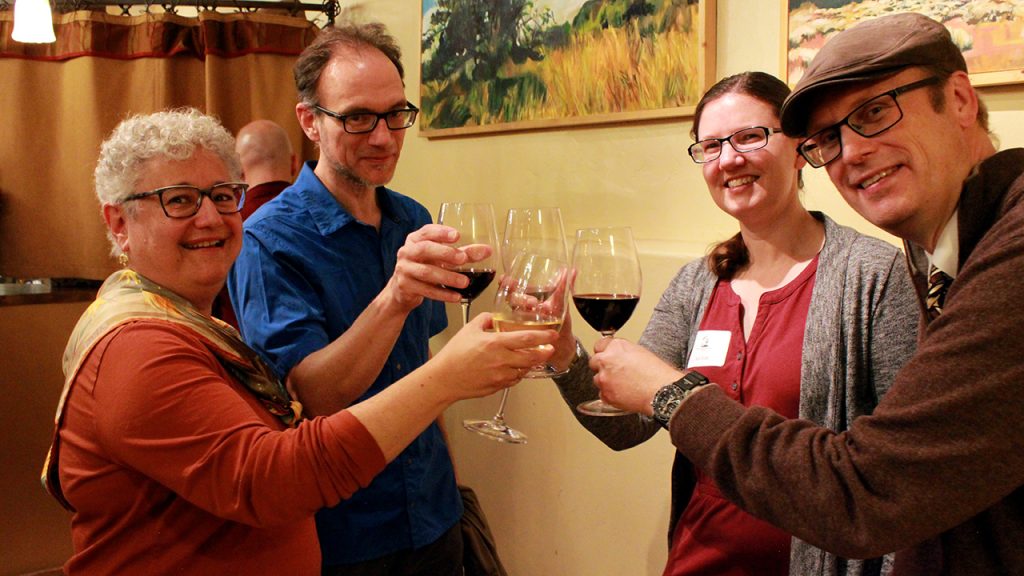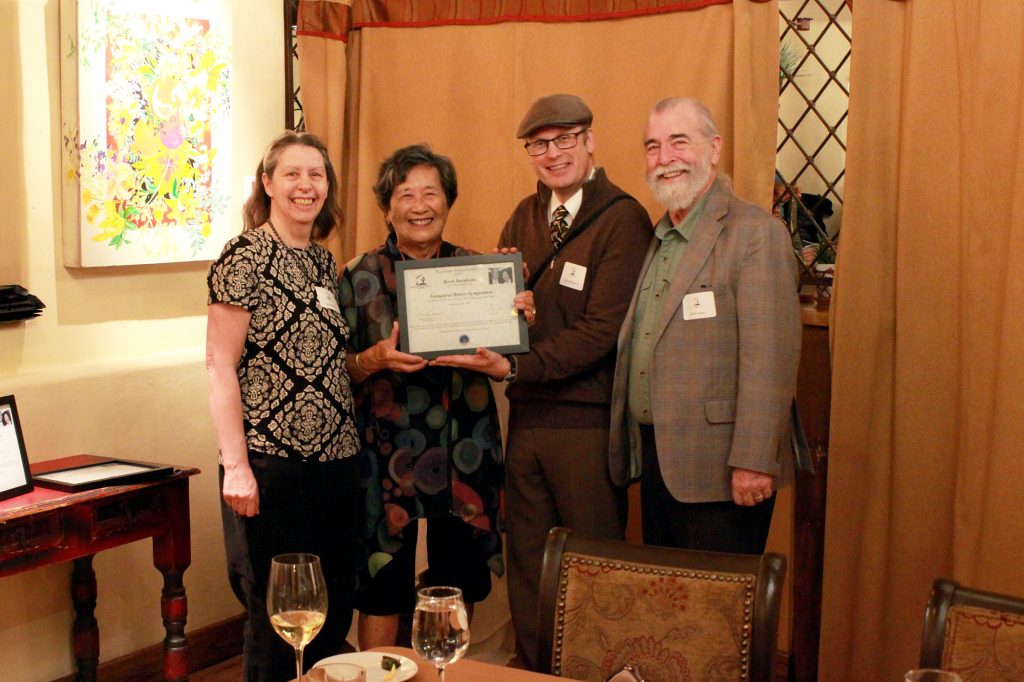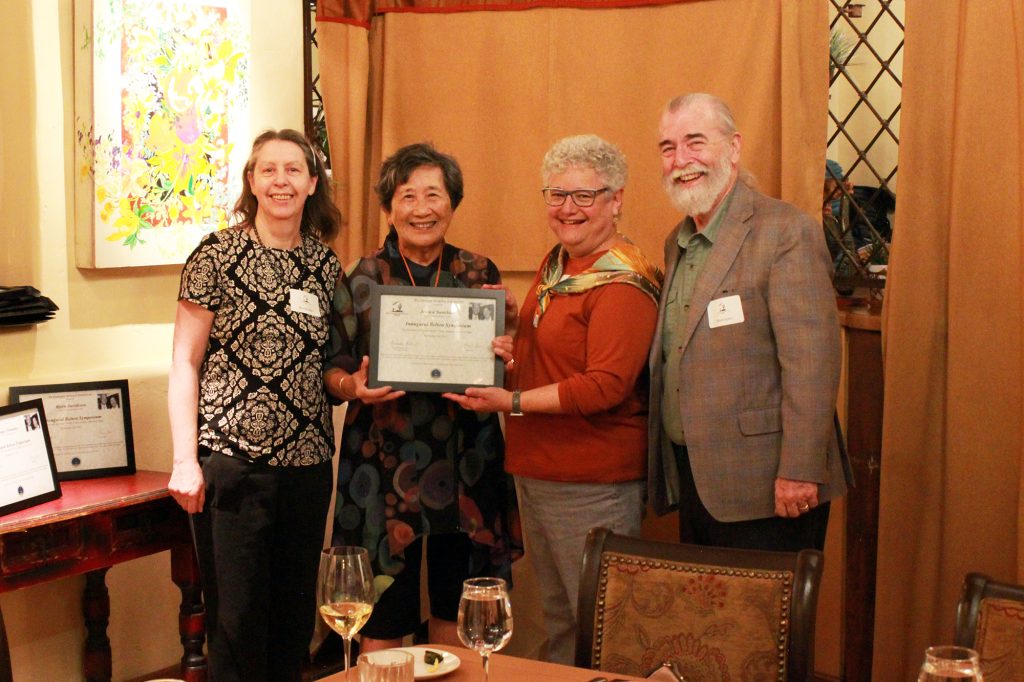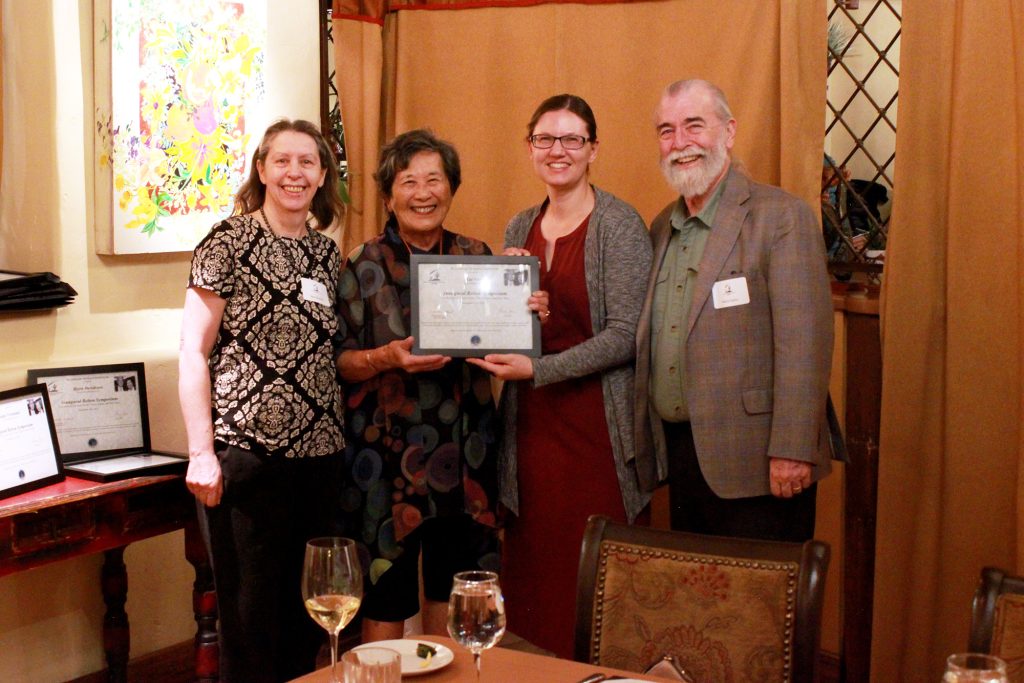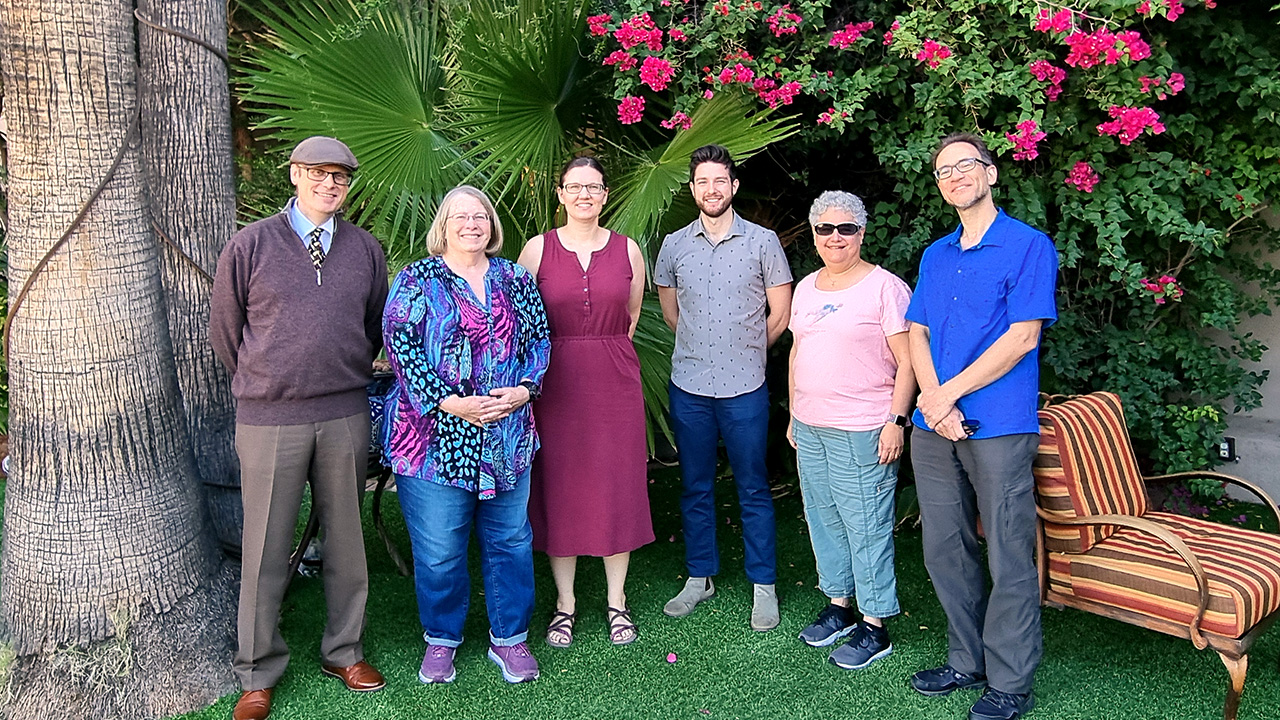During the week of Nov. 3, six comet experts converged in Tucson, Ariz. for the first international Belton Symposium, hosted by the Planetary Science Institute.
The late Michael J.S. Belton (1934-2018) and his wife Anna Don gifted the Institute $100,000 to fund a series of international symposiums focused on the origin, physical structure and composition of comet nuclei, a topic close to Belton’s heart. The goal is for symposium participants to produce a monograph, a book-length publication on a highly specialized topic that gives future direction to scientific investigations. This year, the theme was the diversity of comet nuclei, which is a comet’s solid central core made of ices, dust and rock.
Symposium participants included PSI Senior Scientist Kathryn Volk, Karen Meech of the Institute for Astronomy and University of Hawai’i, University of Maryland’s Jessica Sunshine, Yan Fernandez of University of Central Florida, Björn Davidsson of NASA’s Jet Propulsion Laboratory and John Noonan of Auburn University.
“Participants were selected because they are among the best in their field and for their diversity of scientific perspectives – some specialize in spectroscopy, others chemistry, others dynamics,” said Beatrice Meuller, a PSI senior scientist and a member of the symposium’s scientific organizing committee. The meeting resulted in a nine-page outline focused on two central research themes.
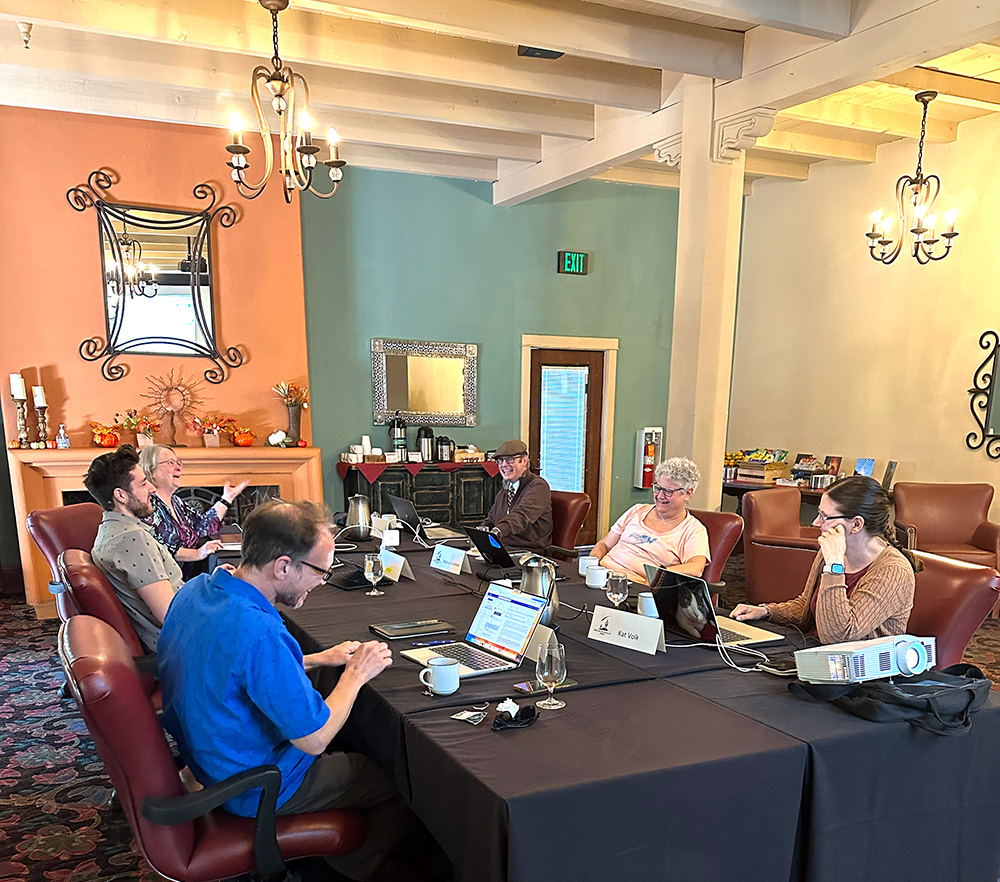
Courtesy: Kathryn Volk/PSI
The first asks what happened to the objects (between 1-10 kilometers) that become today’s comets as they migrated throughout the Solar System since their original formation. What did their early migratory path look like? Were there collisions along the way, or are they mostly pristine?
“People run computer models on comet collisions, but they’re not as well constrained as we would like, partially because we don’t fully understand the material properties of comets, which feed into the models,” said Volk. “We need more lab experiments and detailed modeling to understand how comets would change physically and chemically during collisions.”
The other theme asks how comets are related to the protoplanetary disk from which they formed. Once this question is answered, scientists hope it will inform our understanding of comets and planet formation in other solar systems.
Over the next few months, the team will write the monograph, which will then be published by PSI.
“Research into the origins, physical structure and composition of comet nuclei promises deep insight into the processes at work as the Sun and planets were formed,” said Belton when he made the donation in 2017. “We seek the truth about the origin and evolution of our own Solar System, our home.”
“Mike [Belton] would have been pleased with the participants, their discussions and the environment in which they were held. This first symposium captured the convivial and productive spirit he envisioned for this event,” said Mark Sykes, a PSI senior scientist and a member of the symposium’s scientific organizing committee. “The Belton Symposium will be an important guiding star for the exploration of these fundamentally important primitive bodies in our own Solar System and around other stars.”
Belton, a former member of the PSI Board of Trustees, received his doctorate degree in 1964 from University of California, Berkeley, then moved to the Kitt Peak National Observatory and joined the “Space Division.” He remained at Kitt Peak until 2000, when he left the observatory to set up Belton Space Exploration Initiatives, LLC. He held the rank of Emeritus Astronomer at the Observatory. Belton chaired of the Division for Planetary Sciences of the American Astronomical Society (AAS) and for a short period was a vice-president of the AAS. He also chaired the first decadal study of Solar System Exploration for the national Research Council and a NASA Workshop on the “Scientific Requirements for Mitigation of Hazardous Comets and Asteroids.” He published more than 290 articles on research topics in planetary science and, in 1995, he was awarded the Gerard P. Kuiper Prize in Planetary Science by the AAS. Also, in recognition of his work, minor planet 3498 Belton was named in his honor by the International Astronomical Society.
His contributions were focused on understanding the mechanisms of cometary outbursts, determination of rotational states, exploring the interiors of cometary nuclei, how cometary activity can be used to probe the nucleus, and the size distribution of comets.

Below is a gallery of the closing banquet to celebrate the first international Belton Symposium:

